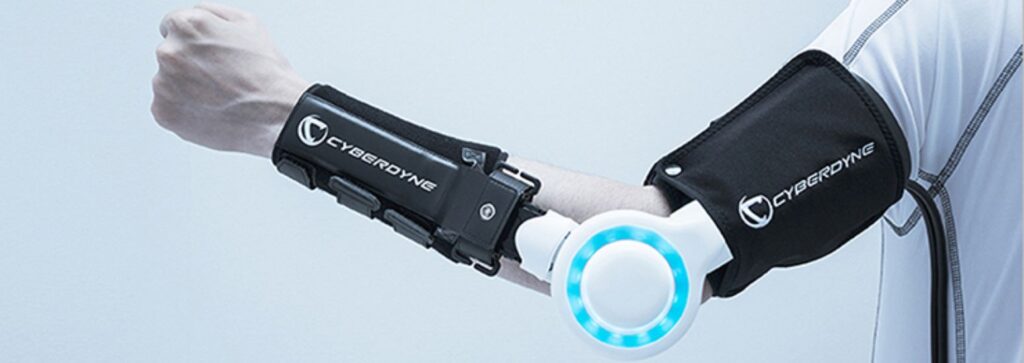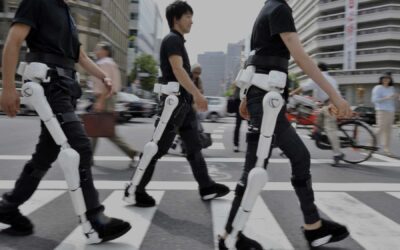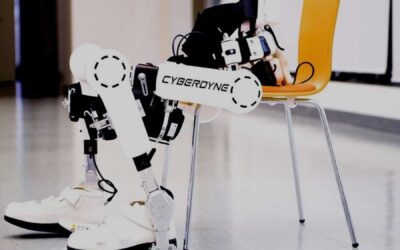The “Wearable Cyborg™” is a robot designed to enhance or augment the physical abilities of users, particularly those facing mobility challenges due to car accidents, illness, or ageing.
HAL, short for “Hybrid Assistive Limb,” is a neurotechnology device that assists patients in recovering natural movement in their paralysed legs based on their intentions. Its purpose is to enhance locomotor activity in patients with spinal cord injuries, stroke, and other neuromuscular diseases in the chronic stage.
HAL’s applications

The first “Wearable Cyborg™,” known as the hybrid Assistive Limb, enhances and supports the wearer’s physical capabilities and bodily functions.
By wearing HAL, a person with limb weakness or paralysis due to spinal cord or brain injuries, such as stroke, traumatic brain injury, multiple sclerosis, or neurodegenerative diseases, can move and exert more incredible motor energy. This technology leads to a fusion of “man,” “machine,” and “information,” assisting individuals with physical limitations.
HAL is also recognised for accelerating the brain’s motor learning, contributing to the neuroplasticity of brain functions.
For HAL to be effective, the nerves connecting the patient’s legs to the brain must still be functional. This artificial limb capitalises on the body’s natural healing ability, requiring the patient to contribute a percentage of effort. This allows HAL to interpret the patient’s intentions and produce results.
The “Wearable Cyborg™” – HAL, developed by Cyberdyne Treatment, has been shown to enhance ambulatory function in patients.
Cyberdyne treatment

To enhance and revitalise the user’s performance, HAL functions:
I understand that you would like the text to be reworded.
As a person attempts to move their body, signals are sent from the brain to the muscles through motor neurons, causing the musculoskeletal system, including joints, to initiate movement. Before the body moves, subtle “bio-electrical signals” representing the person’s intention are emitted through the skin. These signals can be detected by HAL, which then adjusts the power unit to assist joint movement and coordination with the person. HAL utilises the bio-electrical signals reflecting the wearer’s intended motion, promoting interactive biofeedback within and outside the body, involving HAL, the brain, the nervous, and the muscular systems.
Cyberdyne Treatment focuses on spinal cord injury, stroke, and neuromuscular diseases, using the Hybrid Assistive Limb to enhance or restore the wearer’s function. The developed technology is rooted in the innovative concept of the ‘Internet of Humans and Things.’ Through this technology, the human nervous system, the physiological system, and the environmental system are linked to a supercomputer. Extensive data on humans and things are analysed and processed using artificial intelligence, thus expediting the development of a new Cybernetics industry that merges humans with cyberspace and physical space.
Recovery
Rehabilitation robots used in physical therapy help individuals with paralysis or limb weakness due to spinal cord or brain injuries like stroke, traumatic brain injury, multiple sclerosis, or neurodegenerative diseases to improve movement and allow them to generate more incredible motor energy than they usually would.
Cyberdyne HAL is a system that speeds up the brain’s motor learning, ultimately resulting in the brain’s ability to adapt and change its functions.
Visit https://rehabmodalities.com/ to learn more about the Cyberdyne treatment and how you can connect with us.



